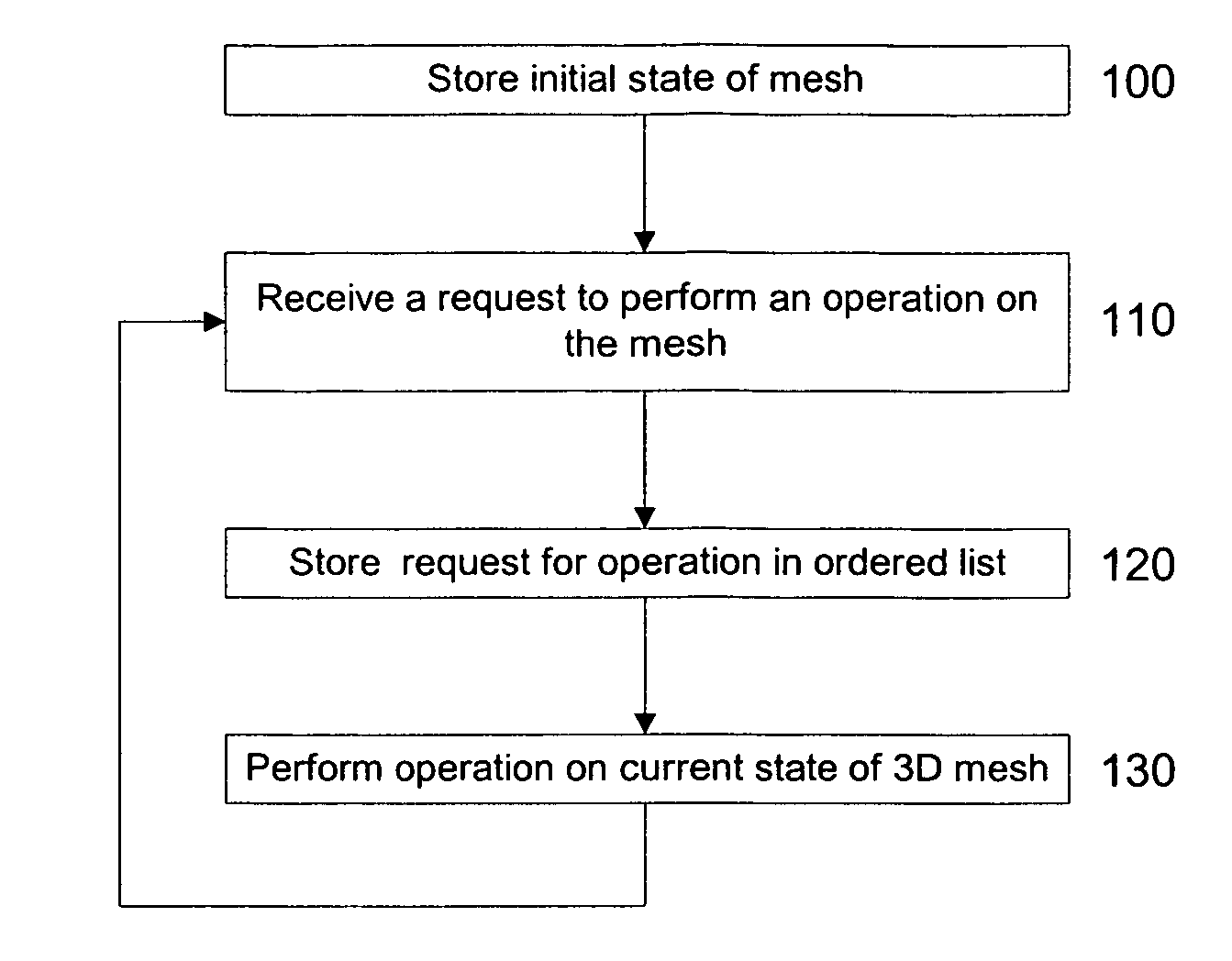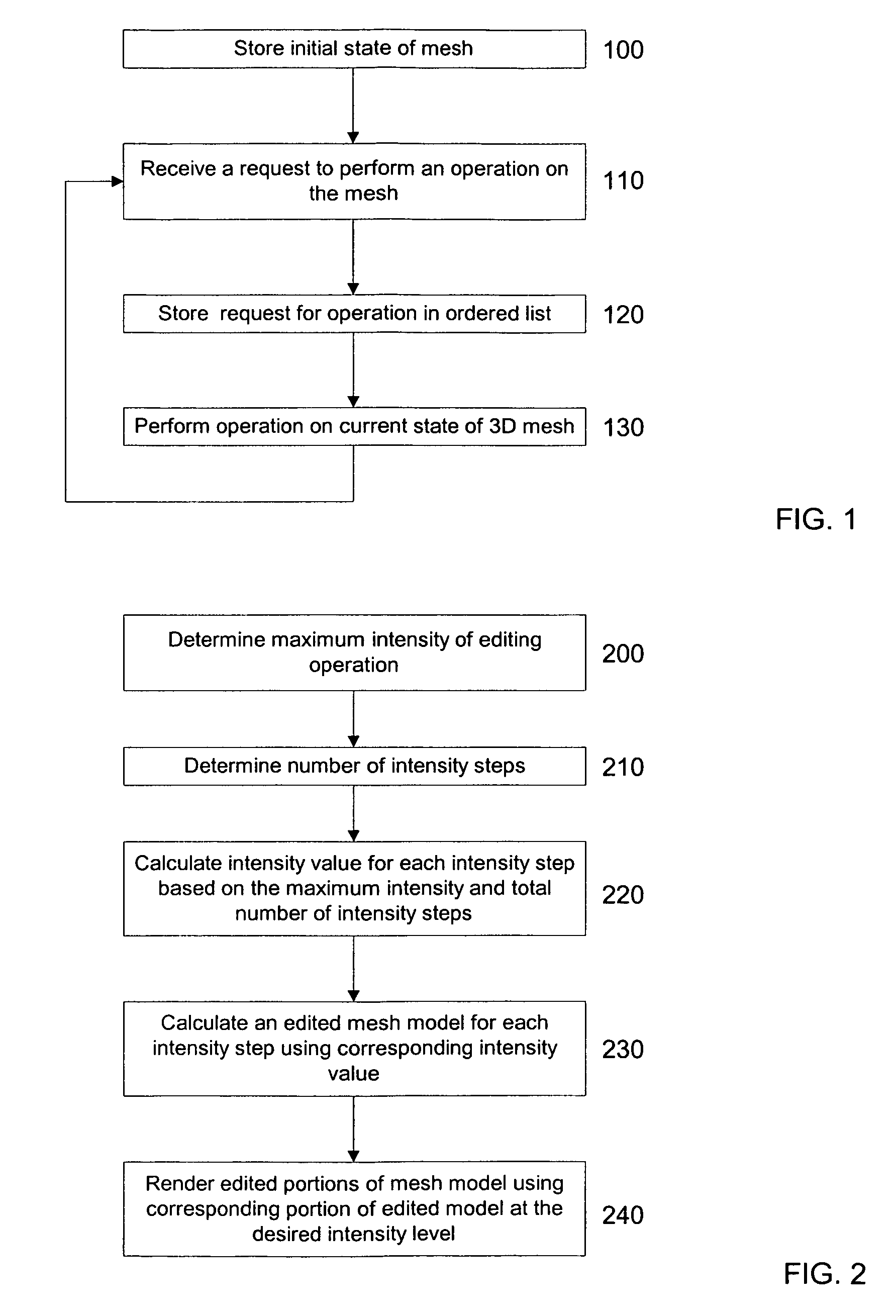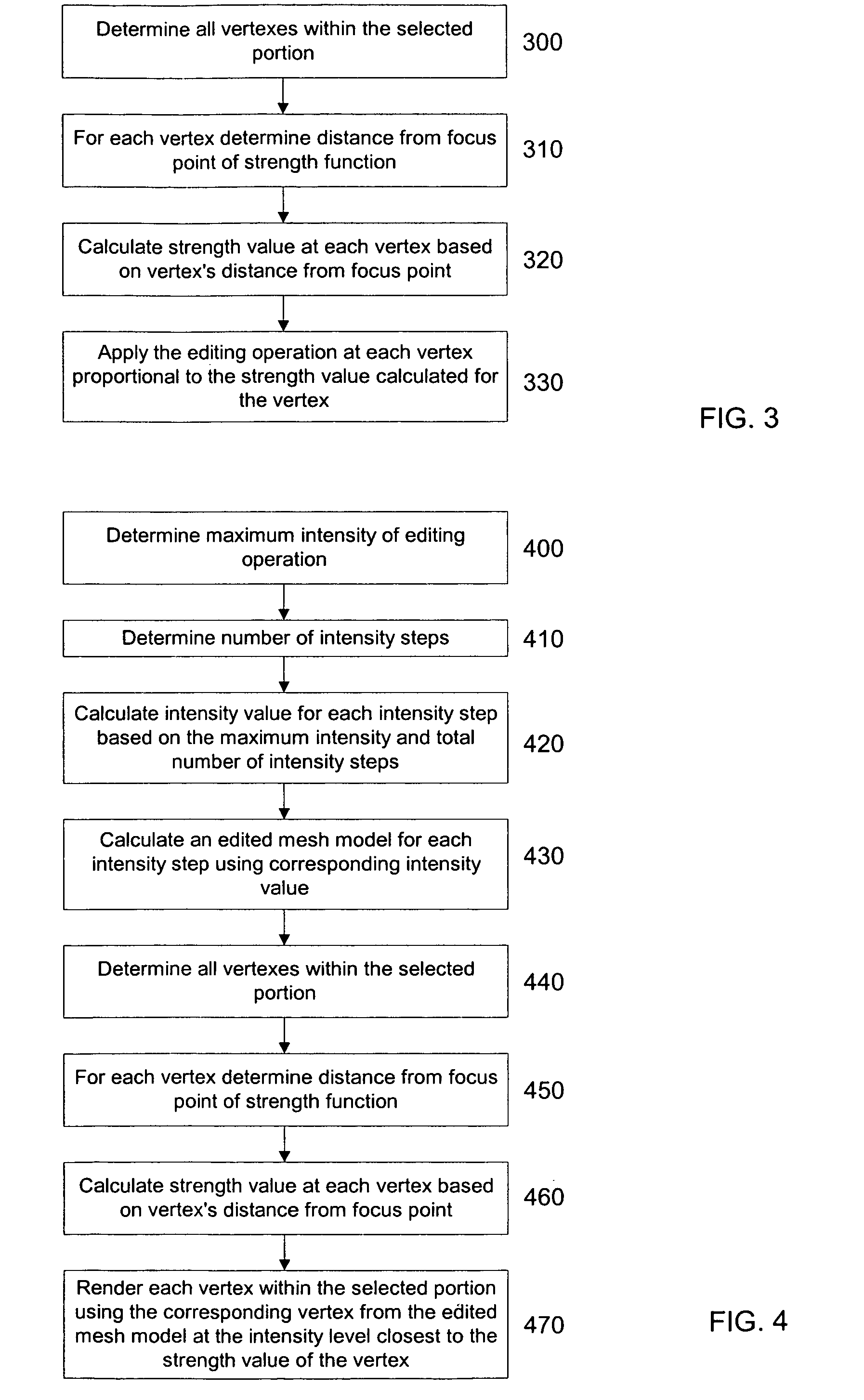Tools for 3D mesh and texture manipulation
a 3d mesh and texture technology, applied in the field of tools for 3d mesh and texture manipulation, can solve the problems of increasing computation time, reducing the overall accuracy of the model, and not being well-suited to the construction of the mesh based on an irregular set of data points, so as to reduce the amount of rendering calculations, reduce memory requirements, and facilitate manipulation and adjustment. the effect of intuitive and efficien
- Summary
- Abstract
- Description
- Claims
- Application Information
AI Technical Summary
Benefits of technology
Problems solved by technology
Method used
Image
Examples
Embodiment Construction
[0030]The present invention can be used in 3D modeling software on a variety of computing hardware such as personal computers based around Intel, AMD, Motorola, or Transmeta processors, or workstations such as those built by IBM or SGI, running any of a variety of operating systems such as Microsoft Windows, MacOS, Unix, Linux, or OS / 2. The software implementing the methods of the present invention can be developed in any suitable programming language, such as C, C++, or Java.
[0031]One embodiment of the present invention reduces the amount of memory that is required to maintain a record of prior versions of the 3D mesh as the editing process progresses. This record is typically used to allow the user the option of “undoing” any operations that have been performed that the user later decides are undesirable. However, storing a copy of the mesh after each editing operation is performed would quickly consume a large amount of memory especially if the mesh is sufficiently complex. In ac...
PUM
 Login to View More
Login to View More Abstract
Description
Claims
Application Information
 Login to View More
Login to View More - R&D
- Intellectual Property
- Life Sciences
- Materials
- Tech Scout
- Unparalleled Data Quality
- Higher Quality Content
- 60% Fewer Hallucinations
Browse by: Latest US Patents, China's latest patents, Technical Efficacy Thesaurus, Application Domain, Technology Topic, Popular Technical Reports.
© 2025 PatSnap. All rights reserved.Legal|Privacy policy|Modern Slavery Act Transparency Statement|Sitemap|About US| Contact US: help@patsnap.com



